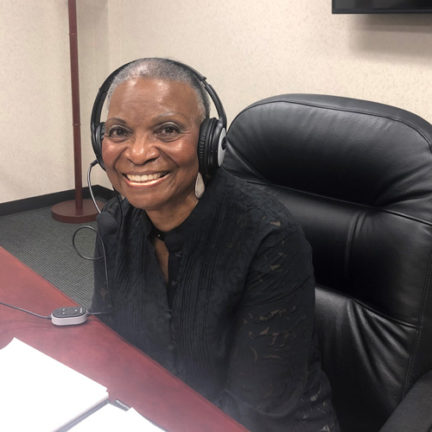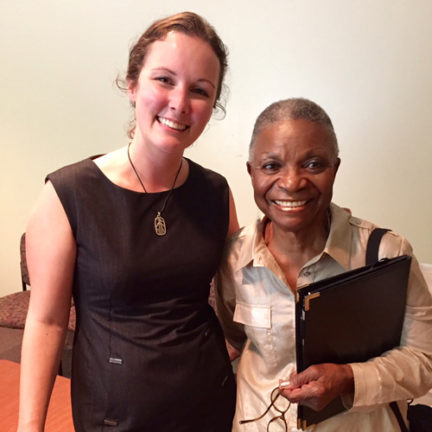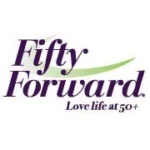At the end of the day, when I go to bed…I say to myself, “Have you added any value anywhere for yourself or anybody else?” Vera Coleman
Vera Coleman is one of those rare finds – a native Nashvillian – who had a wonderfully long career and now, in her late 80s, gives back to her community as an advocate for health and wellness. Her early school experiences led her to a lifelong career in science, and the love she has for her old neighborhood instilled a desire to give back.
Q: Tell us a little bit about your upbringing and roots.
A: I was reared in a three-generation home, the youngest of three children. I was a daddy’s girl and a tomboy. My daddy was an only child. He was a very, very gentle man. I was reared in the Chestnut/Houston area. As a matter of fact, when I was coming here this morning, I intentionally went around that area so that I could just reminisce right there where May Hosiery Mill used to be… We sold our home to May Hosiery Mill when I was 14.
Q: Is your house still in place?
A: No. Over in the Hosiery Mills area now, you’ll find a lot of the shops where they make jewelry and, as a matter of fact, I’m going to swing through there when I leave. I have pictures that mother made of us in the yard and you’ll see a sign that says, “May Hosiery Mill.” My mother always took pictures of us especially on Sunday when we would dress for church. Back then, there were church clothes and play clothes — church shoes and play shoes and never the twain should meet.
 Q: Nashville has changed a lot, but I think traditions still exist. Tell us a bit about Nashville and the changes in this area.
Q: Nashville has changed a lot, but I think traditions still exist. Tell us a bit about Nashville and the changes in this area.
A: … When I was coming up, all the public spaces were segregated: the parks, the restaurants, the pools, and so forth. Of course, we have a lot of history. I know you’ve seen it on PBS when they talk about the famous Jefferson Street. That’s where most of the activities and the professional Black people lived. But also out in south Nashville where I’m from, and southeast Nashville, that’s where the Meharry Medical College was.
Q: Did some of your life experiences trickle into your desire to major in biology and work in research?
A: In the seventh grade, I had a science teacher, Mrs. Crouch. She was a beautiful Southern belle and her husband was a physician at Meharry. I just simply adored her. She was smart. I said then, “I’m going to be just like Mrs. Crouch.” I always liked the lab work and when we’d have those specimens and the bugs, the girls in the class would be drawing up and kind of squeamish but never me. She could always depend on me to go in the jar of where she would have worms and so forth and the formaldehyde … It never phased me. And the preciseness of science. It’s so exact. I was pretty good in math … it just thrilled me. I knew then — that was seventh grade — that I would be in the area of science
Q: You were kind of a forerunner in that area. I know you worked at Vanderbilt as a research assistant for a lot of your career and that was in the 1960s. How did you get involved?
A: I started at Vanderbilt in 1962. Prior to that, I had worked three years at Meharry right out of college in pathology. I left Meharry to go and get married up in Wisconsin. My husband was a professional baseball player. So, the two of us went up there. He started out in the Negro League and was there for a year. Then the Baltimore Orioles bought his contract. And so we went … we were married in Appleton, Wisconsin. When I came back, my grant had not been renewed. And one of my colleagues at Vanderbilt called me and said there was an opening in biochemistry and said, “Are you interested?”
So when I started at Vanderbilt, I told her, “I’m not going to stay. I told her when I get my grant, I’m going back to Meharry.” So she said, “Okay.” It was bittersweet because there were very few Black research assistants and only two were women. It’s amazing, the first principal investigator that hired me, violated all of the EEOC.
He gave me a math problem, and I don’t know if he asked, “Where’d you go to school?” I told him it was Tennessee State and that I graduated in 1958. I guess he didn’t trust my schooling, so he gave me a problem. And I worked it and he said, “Oh, well, you’re hired.” And I thought as much. I only worked for him about a year, and he left. Then I started with another professor who later assumed the chair of molecular biology. And so that’s where I went. I stayed in biochemistry I guess about a couple of years or so. And then I went to molecular biology and the rest of my time was spent there.
Q: Tell us a little bit about being a peer ambassador with the FiftyForward All of Us Research Program. I know that’s near and dear to your heart, can you tell us about the program?
 A: I think, for me, the most outstanding comment that could be made about the All of Us Research Program is the fact that it is committed to diversity. It endeavors to speed up the advancement in healthcare. It’s not like there has not been research made in those areas. But when you have just targeted one group and you’ve left everybody else out, then your data becomes homogeneous rather than heterogeneous. One size doesn’t fit all. So, when you’ve used one group to do all of your research to work out your procedures and treatment, then you wonder as our nation has changed and the groups–some folks have referred to it as a melting pot. You’ve got people from every nationality right here.
A: I think, for me, the most outstanding comment that could be made about the All of Us Research Program is the fact that it is committed to diversity. It endeavors to speed up the advancement in healthcare. It’s not like there has not been research made in those areas. But when you have just targeted one group and you’ve left everybody else out, then your data becomes homogeneous rather than heterogeneous. One size doesn’t fit all. So, when you’ve used one group to do all of your research to work out your procedures and treatment, then you wonder as our nation has changed and the groups–some folks have referred to it as a melting pot. You’ve got people from every nationality right here.
[To illustrate this] … it’s just like eyeglasses. I can’t wear your eyeglasses. They don’t work for me and mine won’t work for you. And so it’s easy for me to conceive that whatever medication one person takes, my body may not even process it the same way that the other one does. I’ve known people that say, “You take such and such drug and I couldn’t take it. It made me sick.” So you see something’s not working. They’re both people. Both human beings, so why is it not working?
The purpose [of All of Us] is to get the data from a million-plus people and then the researchers can work with that data. That data involves your environment; it involves your lifestyle; it involves your health record and your biological samples. That is most important to me. I am waiting for the sequence of my DNA. I want to see what is there because there are certain diseases that [have] manifested in my family, and I want to know so I can pass that information on to my children.
Coleman believes in this rich medical data, knowing it will make a difference for many people, especially as we learn more about how certain diseases manifest differently in different people. She says she won’t be around in ten years, but her data will, and this legacy is what fuels her to share the mission of All of Us.
Give a listen to our podcast and learn more about Vera Coleman’s rich life experience and her commitment to giving back to her community through her involvement with the All of Us Research program. Join her to become one in a million.


